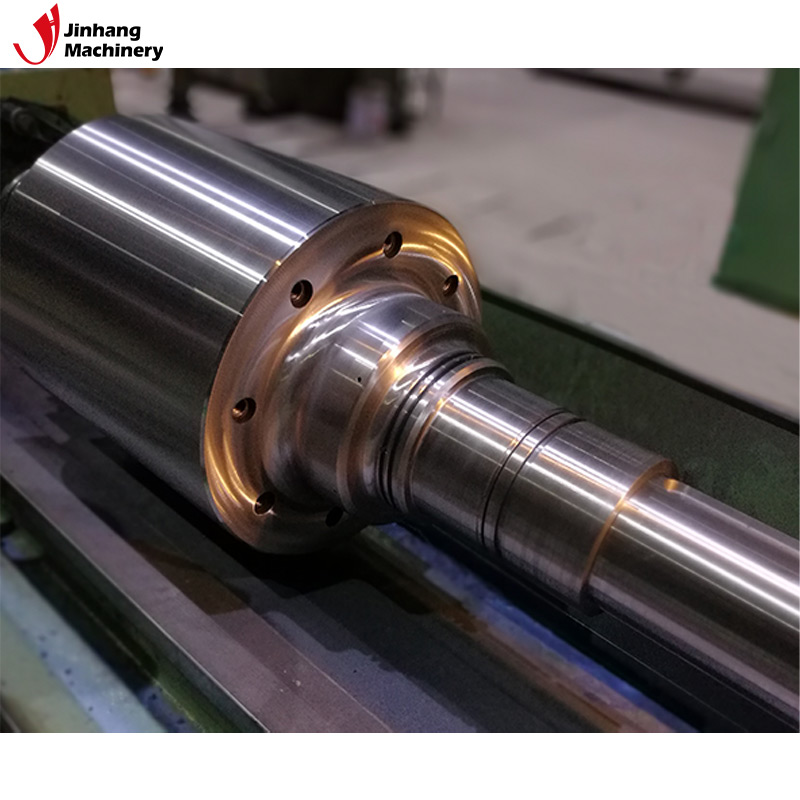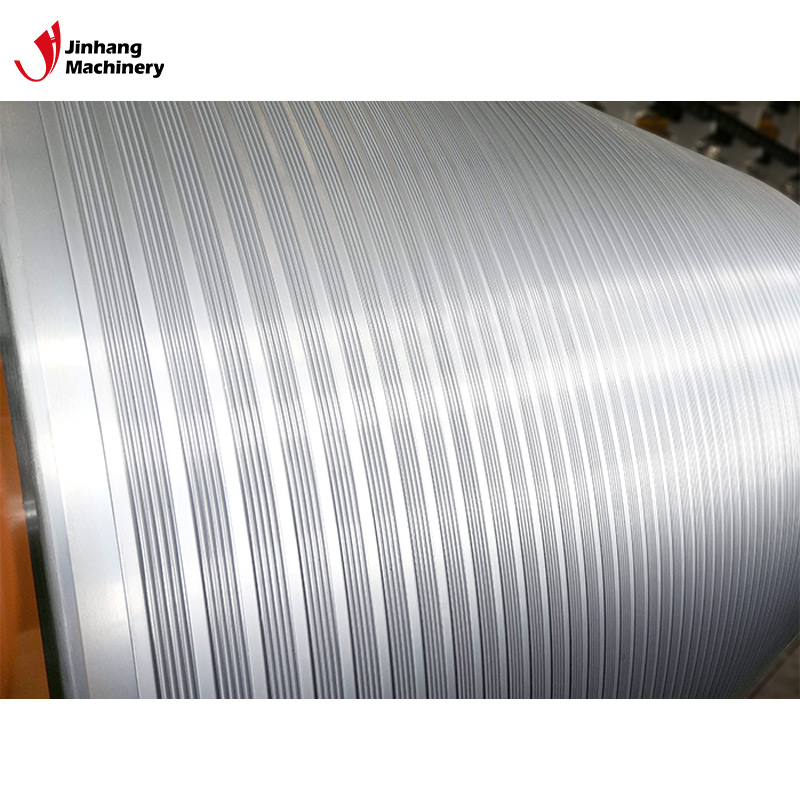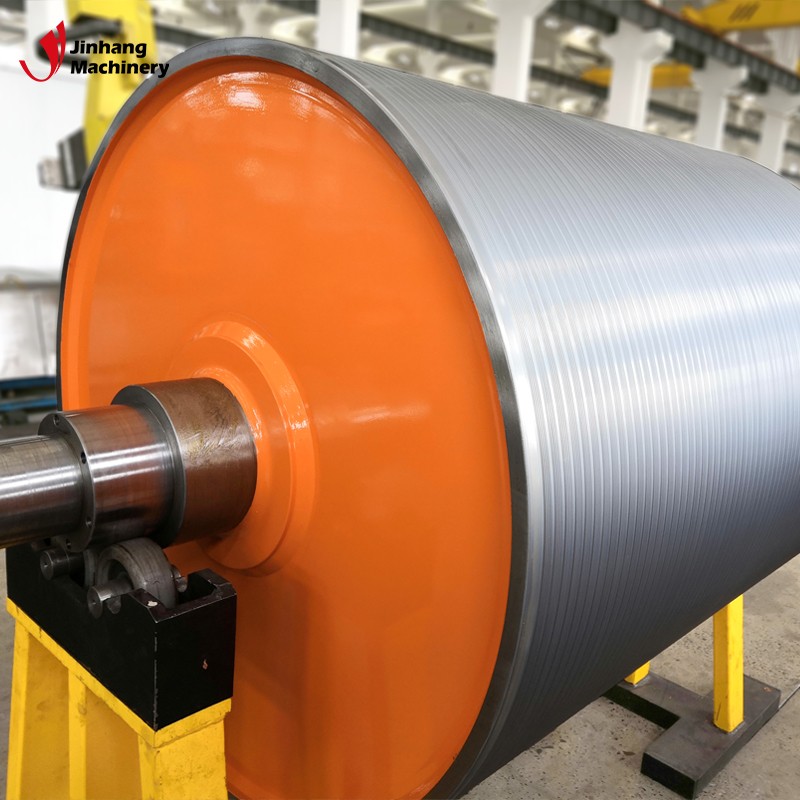Will the stainless steel roller rust after chrome plating?
In modern industrial production, rollers are widely used in many industries such as steel, papermaking, printing, rubber, and plastics as core equipment for processing, transmission, and rolling. Stainless steel rollers have become the preferred material in many industrial applications due to their corrosion resistance, oxidation resistance, and strong mechanical properties. However, although stainless steel has high corrosion resistance, stainless steel rollers may still rust in some special environments. In order to further improve the wear resistance, corrosion resistance, and service life of the rollers, many industrial stainless steel rollers are chrome plated. The chrome plating formed on the surface of chrome-plated stainless steel rollers can provide stronger corrosion resistance and hardness. So, will the stainless steel rollers rust after chrome plating?
This article will analyze the principles of chrome plating, the chemical properties of chromium, the working environment of stainless steel rollers, common corrosion types, and their protective measures, and comprehensively explore whether stainless steel rollers will rust after chrome plating, so as to help readers better understand the corrosion resistance and limitations of chrome-plated stainless steel rollers.

What is the role of chrome plating?
Chrome plating is the process of depositing chromium metal on the metal surface through an electroplating process to form a thin and uniform chromium layer. The atomic structure of chromium makes the chrome plating layer have high hardness, wear resistance and low friction coefficient. Therefore, chrome plating is often used to improve the performance of metal parts. Another major advantage of the chrome plating layer is to enhance the corrosion resistance of the surface. The chemical properties of chromium are very stable and have strong oxidation resistance in the atmosphere, acid and alkali environments.
In the production process of stainless steel rollers, the main function of chrome plating is to increase the corrosion resistance of its surface, improve wear resistance and extend service life. Especially in industrial environments, rollers are often exposed to corrosive media such as high humidity, strong acids or strong alkalis. The addition of chrome plating can effectively protect the stainless steel substrate from erosion by the external environment.
What are the chemical properties and corrosion resistance of chromium?
As a chemical element, chromium has excellent corrosion resistance. Chromium can quickly react with oxygen in the air to form a thin and dense chromium oxide film, which can effectively protect the base metal from further oxidation and corrosion. This characteristic makes chromium an important protective barrier in metal surface coatings. Especially on the surface of chrome plating, the chromium oxide film can further improve its corrosion resistance, allowing the chrome plating to maintain stability for a long time in a variety of harsh environments.
The chrome-plated stainless steel surface, in addition to being able to resist general oxidation and corrosion, can also prevent acid and alkali erosion to a certain extent. Therefore, the corrosion resistance of chrome-plated stainless steel rollers is greatly improved compared to ordinary stainless steel rollers without chrome plating. The chrome plating layer can effectively isolate the contact between the external chemical medium and the stainless steel matrix, thereby enhancing the service life and stability of the roller.

Will chrome-plated stainless steel rollers rust?
Although the chrome plating layer provides strong protection, it does not mean that chrome-plated stainless steel rollers are completely immune to corrosion. In order to answer the question "Will chrome-plated stainless steel rollers rust?", we first need to understand the working environment of stainless steel rollers and the basic mechanism of corrosion.
1. Influence of working environment
Stainless steel rollers are widely used in various industrial environments, which may contain moisture, acidic gases, salt spray and other corrosive chemical media. In such harsh environment, although stainless steel itself has a certain degree of corrosion resistance, it may still corrode if exposed to such environment for a long time. Especially under the conditions of temperature, humidity and poor air circulation, the risk of corrosion will increase.
For chrome-plated stainless steel rollers, although the chrome layer can provide strong protection, the chrome plating is not perfect. Excessive chemical erosion, high temperature and wear of the chrome layer itself may cause the coating to fail, exposing the base material of the stainless steel, causing rust or corrosion.
2. Corrosion Types
Stainless steel rollers after chrome plating may face the following types of corrosion:
● Pitting Corrosion: Local chemical corrosion occurs on the surface of the chrome plating, forming small holes or corrosion points. This type of corrosion usually occurs in places where there are cracks or defects on the surface of the chrome plating. When the corrosive medium enters these defective areas, the protective function of the chrome layer will be destroyed, causing the base material to rust.
● Crevice Corrosion: If there are crevices or contact points on the surface of the chrome-plated stainless steel roller, these parts often become a "hotbed" for corrosion. The chrome layer cannot cover these areas, resulting in the accumulation of moisture and corrosive substances, which in turn causes corrosion.
● Wear corrosion: Under long-term friction and impact, the chrome plating may wear away, exposing the base metal. The base metal will corrode in high temperature or chemically corrosive environments, forming rust spots.
● Galvanic corrosion: When chrome-plated stainless steel rollers come into contact with other metals, especially in humid or corrosive environments, galvanic corrosion may occur. If the chrome plating is damaged, the base metal may become a sacrificial anode for corrosion, causing rust to occur.
Therefore, although chrome-plated stainless steel rollers have better corrosion resistance than non-chrome-plated rollers, rust may still occur under certain conditions.

What are the factors that affect the rust of chrome-plated stainless steel rollers?
1. Chrome layer quality
The quality of chrome plating directly affects the corrosion resistance of the roller. If the thickness of the chrome layer is uneven, there are cracks or pores on the surface, it is easy to cause the chrome layer to fail. The surface of high-quality chrome plating is smooth and flawless, which can effectively block the invasion of external corrosive media. However, the inferior chrome plating is prone to peeling, scratching or cracking during use, reducing the protective effect.
2. Use conditions
The use conditions of stainless steel rollers have an important impact on their corrosion resistance. If the roller is exposed to high humidity, high temperature, acidic or alkaline media for a long time, especially in the environment of corrosive media such as electrolyte or organic solvent, the protective effect of the chrome plating layer may be greatly weakened. Especially in extreme working environments, the chrome plating layer may be damaged by stress concentration, wear or chemical reaction, leading to rust.
3. Maintenance and care
Regular cleaning and maintenance can effectively extend the service life of chrome-plated stainless steel rollers. Long-term accumulation of sediment, oil or corrosive substances on the roller surface may cause local damage to the chrome plating layer. Therefore, keeping the roller surface clean and removing the corrosion source in time can reduce the risk of rust.

How to prevent rust on chrome-plated stainless steel rollers?
● Choose high-quality chrome plating: ensure that the thickness of the chrome plating is uniform and the surface is free of defects to maximize its anti-corrosion performance.
● Optimize the working environment: control the working temperature, humidity and concentration of chemical media of the roller, and try to avoid using stainless steel rollers in extreme environments.
● Regular inspection and maintenance: regularly check the roller surface, especially the chrome plating layer, for cracks, peeling or other damage, and repair it in time.
● Reasonable material selection: for some special environments, you can choose more corrosion-resistant materials, such as high-corrosion-resistant alloy stainless steel, or perform more sophisticated surface treatment.
High-Precision Rolls for Various Industrial Applications – Customizable and Affordable
JH Machinery manufactures high-precision rolls that are designed to meet the needs of various industries, including mining, metallurgy, and packaging. Our products include a range of custom-engineered rolls, such as heating rolls, cooling rolls, and mirror-finished rolls. We utilize advanced production techniques and state-of-the-art machinery to ensure that every roll is built to the highest standards of durability and performance. Whether you need bulk orders or customized designs, we offer competitive prices, discounts, and wholesale purchasing options. Reach out for personalized quotes and special promotions today.
